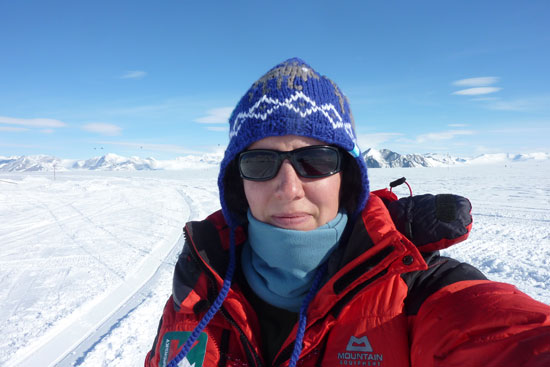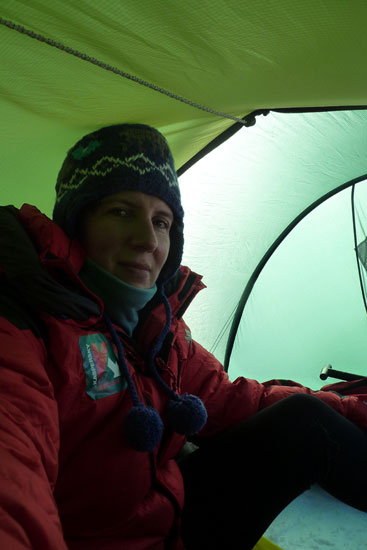To the Bottom of the World—and Back Again
When Felicity Aston caught sight of Antarctica’s coastal mountains, she told me, “they were like a neon sign flashing at me saying, ‘You have finished!’”
/https://tf-cmsv2-smithsonianmag-media.s3.amazonaws.com/filer/20120201025046Transantarctic-Mountains-thumb.jpg)
When we last checked in with British adventurer Felicity Aston, she was just embarking on a solo skiing trek across Antarctica. On Jan. 22, she completed her journey. Aston was delayed by weather early in the trek, which she carried out on skis. By the time she reached the South Pole in late December, on a miserable day of whiteout weather, she was three weeks behind schedule. “I didn’t think there was any chance I was going to be able top do the last 600 miles in the time I had left,” she told me via Skype from Punta Arenas, Chile. Aston’s main worry was that she would miss the last airplane out, which departed from the coastal Union Glacier on Jan. 26. “But the researchers at the Pole said not to worry, that it was all downhill and that I’d have the wind at my back and that there was plenty of time,” Aston recalls.

Near the end at Union Glacier
But no such luck—at least not at first—and for several days after departing from 90 degrees south, Aston faced a brutally discouraging headwind. Then, good fortune came her way abruptly as the wind turned tail and nudged her forward. Moreover, she was nearly two miles above sea level (it’s a thick layer of ice down at the Pole) and it was, truly, all downhill to the coast. In fact, Aston more than compensated for early weather delays, and when she caught sight of the coastal mountains on January 21, she broke down in tears of victory four days ahead of schedule. The peaks stood out on the horizon as dark and steely cold blobs layered in wisps of icy cloud, but they shined with unusual brilliance—for they marked the end.
“They were like a neon sign flashing at me saying, ‘You have finished!’” Aston explained.

Aston in the tent at Hilleberg
That moment was the highlight of the trip, she told me, but there were other standout moments—including spells of abject misery on the ice. These occasions were rooted in the stress and fear of being so separated from the world, for there is no feeling of vulnerability on the Earth, Aston told me, as being alone in Antarctica, where other travelers have died. She was particularly afraid of frostbite. “I was always moving my fingers and toes and touching my face to make sure things weren’t freezing,” she said.
One especially meaningful moment came when she arrived at 90 south. Though none of the researchers present could see her approaching through the wild and snowy blizzard of that day, Aston was greeted onsite by one woman who handed the weather-worn traveler a fresh nectarine and an apple—nearly unimaginably satisfying treats at the very bottom of the world, where prior travelers in dire straits have resorted to eating penguins. Another glowing instant for Aston was the sight of the sun after a particularly gloomy spell of bad weather. She described that golden break in the sky as “a minor miracle.”
Now that she’s crossed the Earth’s most inhospitable continent on her own, what’s next for Aston? She isn’t yet sure, though she suspects it may not be in anyplace frozen. “I think it will be a while before I put on skis again,” she said, adding that she also doubts she will go solo on her next outing.
And did Aston find what she has been looking for in her long and rigorous tramps over the globe? Again, she isn’t sure. For each of her numerous adventures, Aston told me, has been a test of personal limits—and even after a self-powered trip across Antarctica, she is yet to find those limits. “Perhaps what I’m really looking for is failure,” she said, “because until you fail, you don’t know what your limits are.”
Planning Your Next Trip?
Explore great travel deals
Smithsonian magazine participates in affiliate link advertising programs. If you purchase an item through these links, we receive a commission.
/https://tf-cmsv2-smithsonianmag-media.s3.amazonaws.com/accounts/headshot/Off-Road-alastair-bland-240.jpg)
/https://tf-cmsv2-smithsonianmag-media.s3.amazonaws.com/accounts/headshot/Off-Road-alastair-bland-240.jpg)